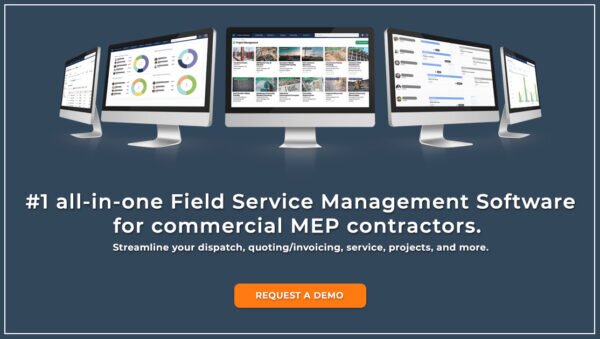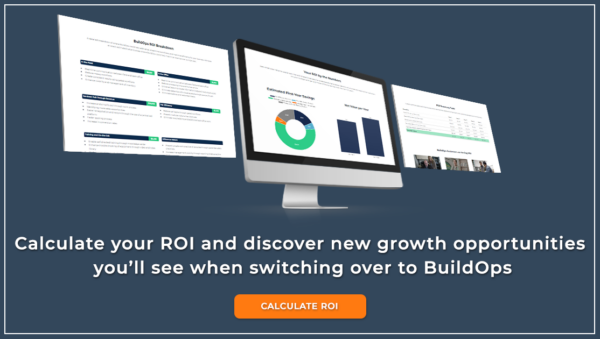.Establishing the Best Utility for Your Organization with CMMS System Comparisons
The right CMMS system can be a powerful tool for businesses, providing information at a glance, streamlining maintenance processes, and reducing downtime. But finding the right one comes down to comparisons.
To select an effective CMMS for your organization, compare different options on a range of criteria. Start by understanding your organization’s needs and the features available in each system. Consider important features like simplicity of use, reporting capabilities, cost, mobile compatibility, scalability, and integrations with existing systems.
It is important to consider how well a CMMS fits with existing processes and protocols. Evaluate each system’s user-friendliness and ease of implementation. Check for customer service and support options, as well as training materials and tutorials.
Be sure to compare pricing plans and decide whether a subscription or an upfront purchase fits your budget better. Determine if the cost includes any team consulting or training fees.
Look for additional CMMS features such as inventory and asset management, predictive maintenance and analytics capabilities, and AI-driven diagnostics. See how well the system can integrate with existing systems like CRMs, sales platforms, and ERPs.
Talk to other organizations who have used the same CMMS systems and ask about their experiences. Use the insights gathered to identify the system that best suits your needs.
Comparing CMMS systems is the best way to make an informed decision when choosing a CMMS for your organization. Make sure to analyze the criteria, costs, and features that each system offers to find the best fit for your needs.
Features of Different CMMS Systems to Identify the Best Utility for Your Organization
Choosing the right CMMS system is key to business success, and selecting the right system requires identifying the features that each system offers. When evaluating a CMMS system, consider how user-friendly it is, its reporting capabilities, cost of use, mobile compatibility, scalability, and integrations with existing systems. Additionally, look for additional features such as inventory and asset management, predictive maintenance and analytics capabilities, and AI-driven diagnostics. Research customer service and support options, as well as training materials and tutorials. Comparing pricing plans can help determine if a subscription or an upfront purchase fits best. Talk to other organizations who have used the same system and ask about their experiences to further refine the best option for your needs. Analyze the criteria, costs, and features each system offers to identify the best fit for your organization’s needs.
Cost Implications of CMMS System Comparisons for Establishing the Best Utility
When selecting the right CMMS for your organization, cost is a critical factor in the comparison process to ensure the best utility. Start by understanding your organization’s needs and the features available in each system, and compare pricing plans to decide if a subscription or an upfront purchase is a better fit for your budget. Be sure to factor in any additional team consulting or training fees that may be associated with the chosen system. Additionally, research customer service and support options to ensure these are included in the cost of use. With the insights gathered, identify the system that best suits your needs and budget.
User Interface of Different CMMS Systems for Establishing the Best Utility
To ensure the best CMMS utility for your organization, compare user-friendliness and ease of implementation of the different systems. Assess the system’s user interface to understand the features, simplicity of use, reporting capabilities, mobile compatibility, scalability, and integrations with existing systems. Determine if the cost includes any team consulting or training fees, as well as customer service and support options, and evaluate training materials and tutorials. Through analyzing the user interface of each system, the best fit for your organization’s needs can be identified, as well as the ideal way to present the information gathered.
Reporting Capabilities of Various CMMS Systems to Find the Optimal Choice
When choosing the optimal CMMS system for your organization, reporting capabilities should be taken into account. Assess reporting features such as the ability to create customized reports, to track multiple locations, and the system’s ability to provide actionable insights. Examine the visual features including graphs, charts, and dashboards, and evaluate the reports that can be generated. Consider the type and format of the data output, and the security measures for data access and storage. Additionally, research if the system provides export capabilities for sharing and/or archiving reports. Identifying the reporting needs of your organization and assessing the reporting capabilities of different CMMS systems will ensure optimal choice.
Integrations Offered by CMMS Systems in Establishing the Optimal Fit for Your Organization
When seeking the optimal fit for your organization, examine the integrations offered by CMMS systems. Evaluate the system’s compatibility with existing processes and protocols, and its ability to integrate with CRMs, sales platforms, ERPs, and other related systems. Moreover, assesses if the CMMS offers features such as inventory and asset management, predictive maintenance and analytics, and AI-driven diagnostics. Analyze the user interface of the system. Determine if the cost includes team consulting or training fees. Gather insights from other organizations who have used the same CMMS systems, and use the information gathered to identify the optimal fit.
Mobile Compatibility of Different CMMS Systems to Establish the Best Utility
To ensure the best CMMS utility for your organization, compare different systems on criteria such as mobile compatibility. Examine the user interface of each system to determine mobile accessibility and how streamlined the experience is from a mobile device. Assess the features of each system, such as whether they support offline operations, the app’s load speed, and the effectiveness of security measures. Taking these into account simultaneously will enable you to make an informed decision and access the best mobile experience for the organization.
Scalability of Various CMMS Systems to Find the Best Fit for Your Organization’s Needs
When comparing different CMMS systems, scalability should be taken into account. Research the level of the system’s scalability, its mobile compatibility, integrations offered with existing systems such as CRMs, sales platforms, and ERPs, and its user-friendliness for implementation and use. Analyze customer service and support, as well as training materials and tutorials. Evaluate features such as inventory and asset management, predictive maintenance and analytics, and AI-driven diagnostics. Talking to other organizations who have used the same systems can help find the best fit for your organization’s needs and budget. Through research and comparison, the optimal CMMS system for your organization can be identified.
Customer Service and Support Options for CMMS Systems to Establish the Best Utility
Evaluate customer service options, such as the system’s availability and quality of service. Assess support options, such as any tutorials, training materials, and educational programs available, and the availability of team consulting or training fees. Research customer service forums for existing users to get feedback on each system’s customer service and support.
AI-Driven Diagnostics Functionality to Find the Best Utility with CMMS System Comparisons
When selecting the optimal CMMS system for your organization, look for AI-driven diagnostics functionality such as inventory and asset management, predictive maintenance and analytics, and AI-driven diagnostics. Compare user-friendliness and ease of implementation of the different systems to understand the features, simplicity of use, reporting capabilities, mobile compatibility, scalability, and integrations with existing systems. Additionally, evaluate customer service and support options, as well as training materials and tutorials. Talk to other organizations and ask about their experiences to further refine the best option for your needs. Analyze the criteria, costs, and features each system offers to identify the best fit for your organization’s needs.
Key Takeaways
Choosing the best CMMS system for your organization can be an overwhelming task. Consider user-friendliness and ease of implementation, pricing plans, customer service and support options, and scalability. As well as, mobile compatibility, integrations with existing systems, and additional features such as inventory and asset management. Finally, predictive maintenance and analytics, and AI-driven diagnostics. Gather insights from other organizations who have used the same CMMS systems to refine the selection process. Utilizing CMMS system comparisons is the best way to identify the optimal utility for your organization.





